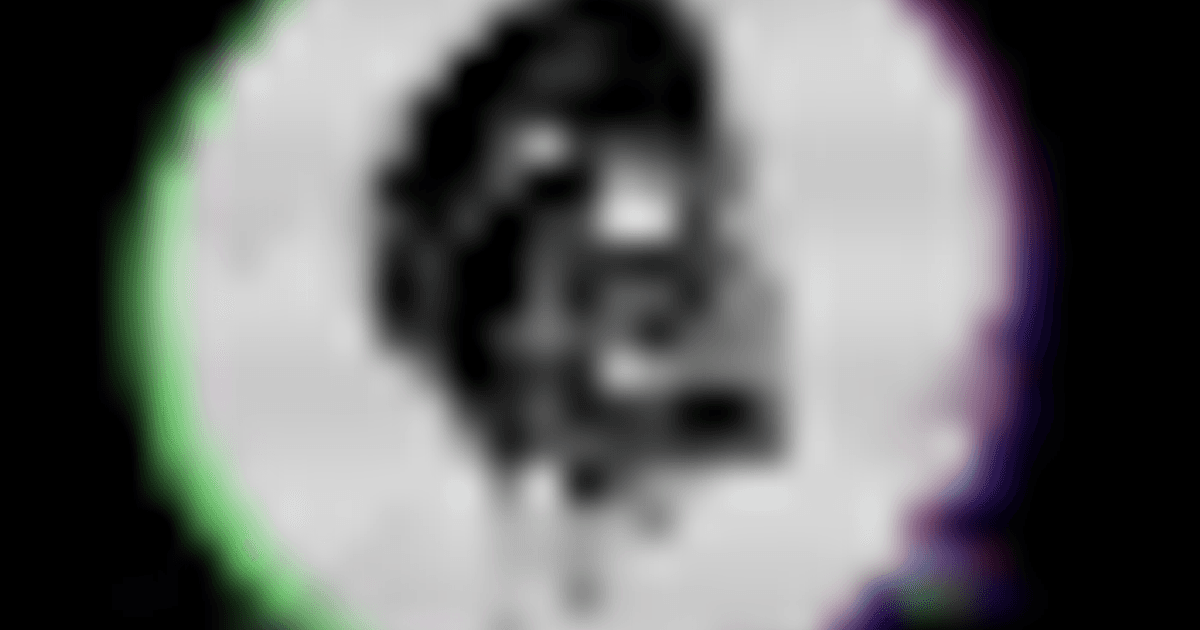Journey to the Center of Despair: ‘The Descent’ Has Lost None of Its Power After 20 Years

The New York Times recently published the results of a poll of filmmakers, performers, and film enthusiasts of the Greatest Films of the 21st Century. At least so far of course. The “newspaper of record” then opened it up to a reader’s poll and naturally, a trend followed to post your ballot on social media. My allergy to that current form of the town square prevented me from partaking in this, but if I were to limit my personal picks to only the horror genre, a few titles come to mind. I won’t name them all here as they will distract from my purpose in writing this article, but the film I know would be perched at or near the top of my personal list is Neil Marshall’s claustrophobic masterpiece The Descent, which celebrates the 20th Anniversary of its UK release this month.
For me, The Descent was the first horror movie that I can remember consciously conversing with experiences in my own life. Several movies had done so on an unconscious level before, but this was the first time I remember being able to pinpoint and articulate a subtext that applied to me. Only a few months before seeing the film for the first time, I had been officially diagnosed with clinical depression, a diagnosis which, looking back, was long overdue. When I saw the film’s protagonists hanging over endless chasms, crawling through oppressive darkness, and eventually encountering demons in that dark, I felt as if the filmmakers had seen into my mind and held the mirror up to nature, as Hamlet would say. Since this first viewing, the depths to be mined from the film have only come into sharper relief, expanded in scope, and refined in nuance.
There is a long tradition in horror, and in a wealth of great literature as well, in which the surroundings of the characters reflect their inner life or mental state. In essence, the film is a mapping of, and journey through, the mind of Sarah Carter (Shauna Macdonald) as she navigates an unbearable grief in hopes of finding escape. Each harrowing episode of the film—the impossibly tight tunnel, the chasm, the crawlers and the bone cavern—all indicate one step closer to her final destination which, whether it is the UK or US ending, is a very dark destination indeed.
Even before reaching the cave there are indications of dangers ahead. The group of young women around which the film centers are strangers in a strange land headed, with the exception of Juno (Natalie Mendoza), unknowingly into a previously uncharted cave system. Even something as small as the musical choices on the radio, “mud, blood, and beer or sweet Jesus,” are indications that they are in a place they don’t belong. On the trail to the cave opening, they pass a rotting elk carcass which they speculate could have been killed by a bear or “bigfoot,” though repeat viewings bring the knowledge that it was an entirely different kind of beast. Even in the beautiful opening antechamber with its sunlight, waterfall, and greenery, there are bloody scratches that appear to have been made by a hand in one of the rocks and a flurry of bats that foreshadow what is to come.

As they descend into the darkness, it quickly becomes clear that there is only one way forward and after a cave-in of a narrow tunnel, there is no going back. This first tunnel is a key moment not only for the scenario but for Sarah’s character. She gets stuck in this passage because she is carrying a literal burden that the others are not, a wet bag filled with ropes and supplies, but figuratively she is carrying an invisible burden, the traumatic deaths of her husband, Paul (Oliver Milburn), and daughter Jessica (Molly Kayll) the year before. As she is unable to move, trapped in the dark, the entire weight of her emotional pain seems to press down on her with all the weight of the mountain she is trapped beneath.
She is reassured by her best friend on the trip, Beth (Alex Reid), who stayed with her throughout the early days of her recovery, both physical and mental; “you’ve already survived the worst thing that could possibly happen. And you’re still here.” This companionship and support gives her the strength she needs to push forward even the slightest bit and as the sound of the cave collapsing begins, she leaves her physical burden behind. There is power in this symbolism, but it also endangers the group when they come to their next obstacle. After the cave-in, Sarah also has a blurry vision of Jessica and the lit birthday candles on a cake. It is a memory of something that never happened, a planned event she looked forward to but never got to experience. In this sequence there is also Juno’s cryptic line “We all lost something in that crash,” which introduces another major theme of the film, the secrets we keep from each other. In most cases throughout The Descent, these secrets are intended to protect others but simultaneously have selfish motives of self-preservation.
Both themes of being lost in grief and despair and the carrying of secrets are illustrated in the next sequence in which the party needs to cross an apparently bottomless chasm. Becca (Saskia Mulder) goes first, gripping the rock ceiling and placing carabiners and rope so the others can cross. While placing these she discovers an old caving spike, later revealed to be a piton that is at least 100 years old, driven into the rocks. Becca chooses not to reveal even this, underscoring that they all have secrets they are withholding. These kinds of secrets, even those that seem insignificant, can be deadly and drive even close friends and family apart. There is plenty of indication that the friendship between Sarah and Juno has been disintegrating even before the betrayal that is later revealed. It is clear that Sarah is maturing much more quickly than her old climbing buddy and, even before the accident and the grief, she was simply outgrowing Juno. Juno obviously feels this as she has essentially found a replacement for Sarah in the young and reckless Holly (Nora-Jane Noone), whose hot-headed nature soon gets her severely injured and eventually killed.
The scene at the chasm is also a powerful metaphor for depression, grief, and other dark nights of the soul. Even after all these years my heart leaps into my throat every time I watch this sequence, not only because of the physical dangers the characters are experiencing, but because of the memories of moments that have left me feeling like I am hanging by a literal thread, or by my fingertips in the case of Becca, over the bottomless pit of the unknown. There is also a great illustration of the power of community in this scene, however, as they shout encouragement to one another as they cross. Becca even allows her hand to be severely injured rather than let Juno fall to her death. Because of the piton, we also learn that others have entered this cave before but because it remains uncharted, the characters also know that they never got out. An ancient cave painting reveals, however, that there is hope as it indicates two entrances to the cave. It is also no accident that the first shot of a crawler, a devourer of hope, is immediately after this discovery.

The crawlers are among the most terrifying monsters of the past 25 years, maybe more. Marshall reveals them slowly and never overplays his hand. In our first glimpses of them, he breaks convention and, instead of placing them lurking in the background behind the characters, frames them in the foreground, so much so that they might be missed on a first watch. When Sarah shines her light on one, Juno tells her she just imagined it. Sarah tells the group, “I saw someone,” to which Juno responds, “No, you heard something and saw what you wanted to see. It’s the dark. It plays tricks on people.” I hardly need to comment on this in this day and age, but the film is making the long-standing point that people’s perceptions should not be so easily dismissed. Soon, the entire group believes when they come across a massive cavern filled with animal bones and are attacked by one of the creatures. To this day, the moment the crawler appears on the infrared setting of the Handicam makes me jump.
What exactly are the crawlers? The movie only gives hints and hypotheses but not definitive answers. It seems that they were once humans, perhaps descendants of those who left behind the old equipment, who evolved (and devolved) into a state of pure survival instinct. Their eyes atrophied from the darkness while their ears sharpened to near bat-level efficiency as their bodies adapted to navigate the endless cave system and grip the walls and ceilings. In the metaphorical sense, they are the final result of being trapped in a state of mental darkness without even the dimmest light of hope. Without hope, we can so easily lose ourselves. If we trap ourselves within and make friends with the dark, we lose our humanity. These inner demons are our memories of pain that, left to their own devices, attack, devour, and destroy all hope. They feed on our fear and despair, and if they cannot destroy us entirely, they make us one of them.
Sarah’s journey continues when she discovers two of Juno’s dark secrets. First, that she left Beth for dead and second that she was having an affair with Sarah’s now deceased husband. After this discovery, Sarah is baptized in a pool of blood and is born again with a new determination—first to survive, but also to confront and possibly kill Juno. It is a complex moment as she seems to be more alive than she has been since the accident, but she also seems to be on the first steps of the path to losing her humanity and becoming like one of the crawlers. When Sarah finds Juno, they fight off a group of crawlers but instead of relying on the caving axe, she uses her teeth and bare hands to kill one of the creatures. It’s a bit like the “Dawn of Man” sequence of Stanley Kubrick’s 2001: A Space Odyssey (1968) in reverse. Rather than a primitive creature learning to use tools and thereby evolving, Sarah sets the tools aside and becomes a more primitive, elemental being.

When it comes to the ending, you can take your pick, but both scenarios are rather bleak. In the shorter US cut, Sarah escapes the cave, but the film ends with her haunted by the guilt of abandoning her humanity to the point of killing Juno. This ending is very reminiscent of the ending of The Texas Chain Saw Massacre (1974) in which Marilyn Burns as Sally escapes covered in blood but has clearly lost her mind and may never recover. In the longer ending, she is still trapped in the cave, living eternally in a moment that never happened—Jessica’s planned but never realized birthday party. The camera zooms out to reveal Sarah locked in the center of the mountain surrounded by the shrieks of crawlers. Or figuratively locked in her own mind without light, without joy, without hope. Either way, it’s a dark reality.
The Descent continues to be effective in ways that few movies that reach the twenty-year mark can. It is one of the few horror films that I still find scary even after multiple viewings. I think this is because of the care put into building the characters before they begin getting picked off by monsters. Also, there is the primal fear of the dark that never really leaves us as a species. Even the limitations of the technology used to make the film back in 2005 give the film a kind of immediacy that it would not have if made today. More than any of that, the psychological subtext that becomes more and more evident to me as time goes by, becomes increasingly effective. The sociological implications of these matters have become more powerful as well in light of collective traumas like ecological disasters, the COVID-19 pandemic, seemingly endless ongoing wars, and political unrest that have faced individual nations and the world at large in the past two decades. The personal and collective loss of humanity represented by the crawlers, or at least the possibility of such a loss, has reached the point of existential crisis in the past few years, which is just one reason why The Descent is more powerful than ever.
When I first discussed how much this movie affected me, I was answered with responses like “The chicks in a cave movie? Really?” Yes. Really. This deceptively simple film is one of the most powerful depictions of what it feels like to experience depression and grief that I have ever seen. It has such an effect on me that I rarely revisit it (there were approximately ten years between my first and second viewings) because it feels like it is part of my soul. It is so deeply under my skin that it stays with me long after the credits roll and the days, months, and even years between viewings go by. Even with only the few viewings I have had of it, I can play whole sequences of it in my mind at will. I never want The Descent to become a comfort watch. I want it to retain its ability to wash its dread over me. There are few films that have that kind of power and it is just one reason why The Descent is not only among the greatest horror films of the past twenty-five years, but of all time.

The post Journey to the Center of Despair: ‘The Descent’ Has Lost None of Its Power After 20 Years appeared first on Bloody Disgusting!.

